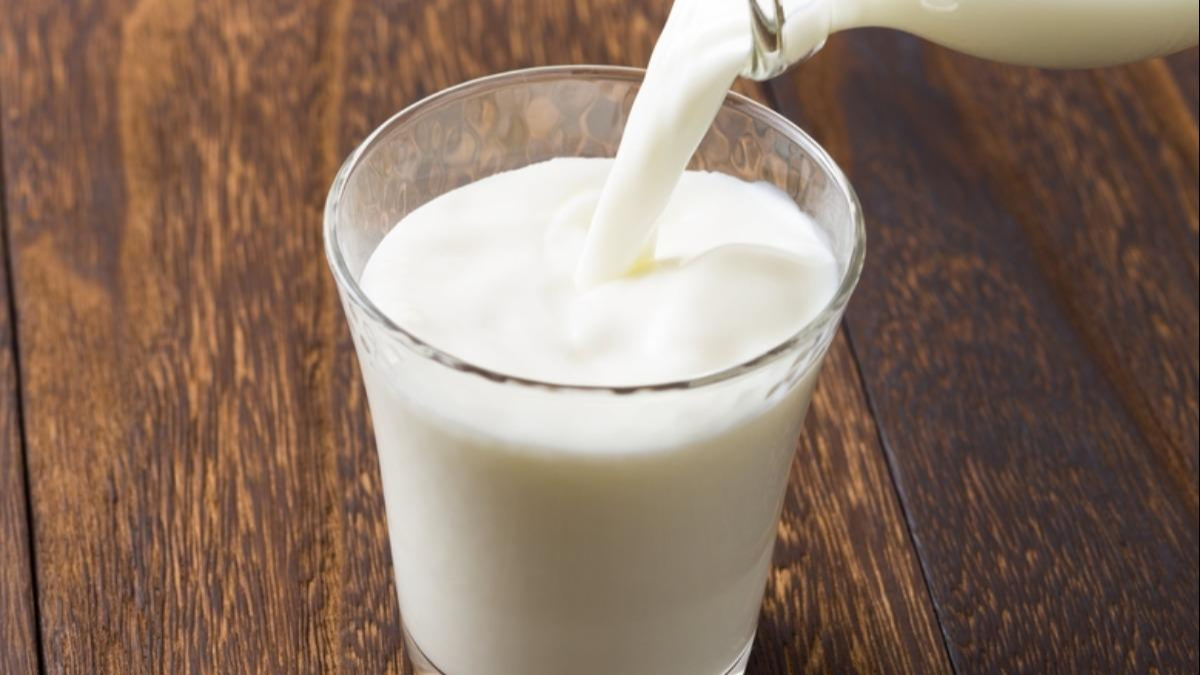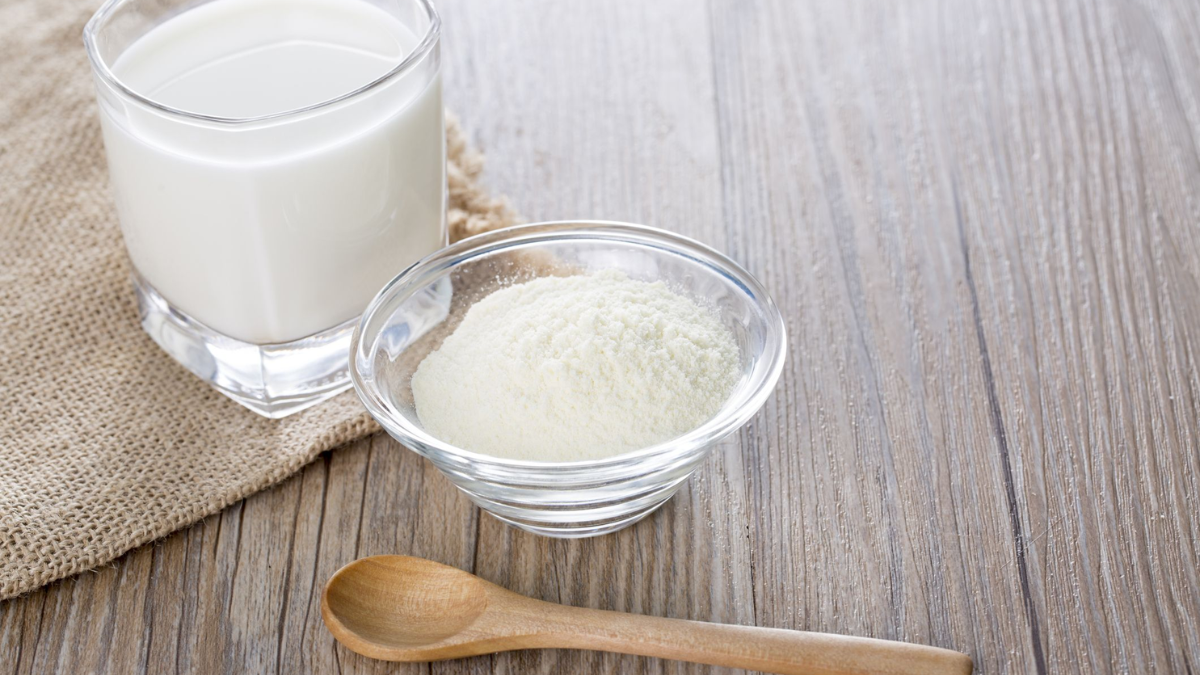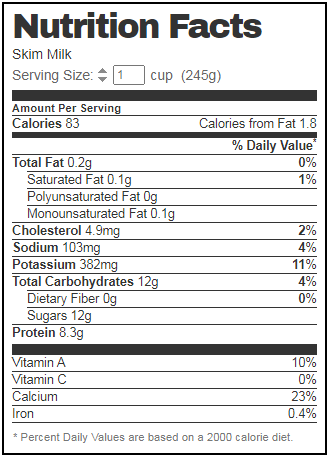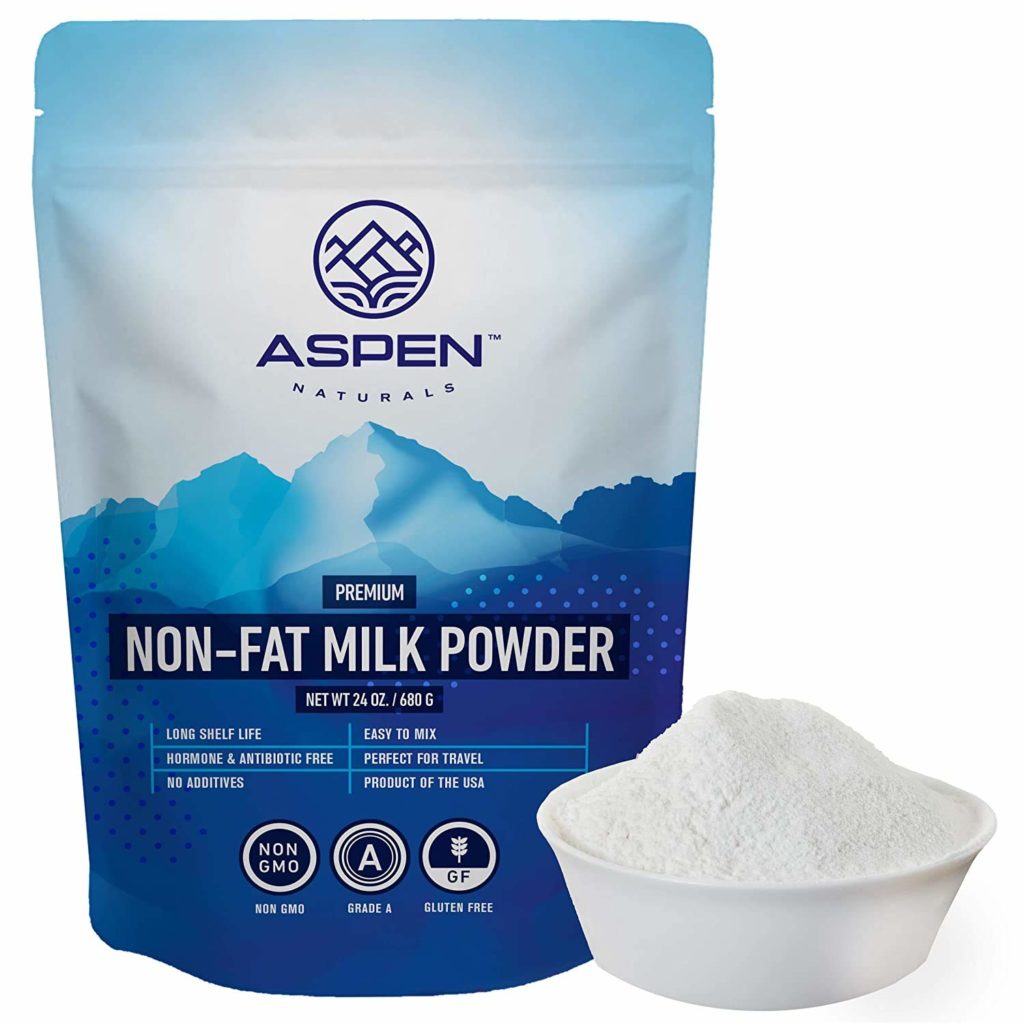Skimmed milk became more popular in the US in the 1980s as people began to pay more attention to how much fat they were drinking. Many people believed that increasing your fat intake would result in your body storing more fat, which would lead to a weight increase. Nonfat milk has gained popularity as a substitute since it contains fewer calories and fat than whole milk. Whole milk has a bad reputation because it has higher saturated fat and could raise cholesterol.
The two forms of cholesterol are LDL, or “bad” cholesterol, and HDL, or “good” cholesterol. Consuming whole milk causes your LDL to rise more than skim milk does. But whole milk and other dairy products’ saturated fats also contribute to raising HDL levels. Many people choose to skim milk over whole milk because doctors advise consuming no more than 20 grams of saturated fat each day. Furthermore, whole milk lacks the healthy fats that can be found in foods like:
What is Skimmed Milk?
Let’s define this product first before discussing its health advantages. Is skim milk fat-free would be the most frequently asked query. Given that it has a fat content of less than 0.5 percent, it is practically fat-free. Dairy fat is practically impossible to totally eliminate, therefore skim milk still contains some trace amounts of it. Skim milk is fat-free. However, studies on pigs dating back to the 1930s discovered that giving pigs skim milk aided in their speedy weight gain.
For this reason, farmers continue to feed skim milk to pigs. According to some academics, cow’s milk isn’t intended for human consumption. The amount of protein in each serving of skim milk is one of its advantages, but it’s crucial to remember that cow milk has three times as much protein as human milk. This can cause your body’s metabolism to shift.
Skimmed Milk Nutrition Facts
Skimmed Milk vs. Whole Milk
The dispute between proponents and opponents of skimmed milk extends beyond the realm of health. Recipes frequently include milk as one of the components. From this angle, consistency and flavor are quite important. We’ll be honest: If you’re using milk for cooking, whole milk is typically preferable to skim. You can create a nice latte with low-fat milk, and it’s also fine to mix some into your cereal in the morning.
To be fair, though, it stinks when it comes to baking or preparing foods that call for heating milk together with other ingredients. A lack of fat will cause the dairy’s protein to clump together and give the meal a gloppy consistency. Consuming this consistency is not the most enjoyable experience. Additionally, the absence of fat will result in less luster and rich flavor in baked items.
Oh, and in terms of flavor, skim milk is typically insipid and quite watery. Therefore, if you enjoy the milky flavor of full dairy, the low-fat variety won’t be your first choice. However, some people prefer the flavor of skim milk over whole milk and don’t like how it tastes. As a result, everything boils down to preference.
Health Benefits of Skimmed Milk
We’ll reiterate that low-fat milk typically doesn’t include any dangerous ingredients, and that gravity is all that’s needed to remove the fat. As a result, this product is, at worst, not as healthy as whole milk because some vitamins are lost along with the fat. However, it poses little risk. However, is skim milk healthy for you?
Good Fats
Prior to the publication of new studies indicating that fat may not be as harmful as previously believed, we all assumed that fat was terrible for everyone. Our body needs fat because it correctly dissolves and absorbs vitamins. Fat also provides us with a significant amount of energy. In fact, some people can convert this macronutrient into pure energy considerably more effectively than they can convert carbohydrates, which were once thought to be a primary source of energy for the human body. We are now learning to let go of our fear of obesity.
We should only consume 44 to 77 grams of fat per day, and everything is only healthy for us in moderation. 7.4 grams of this macronutrient are present in 200 ml of whole milk, which is a significant amount of fat. The skimmed alternative would be preferable if you overindulged on fatty foods earlier in the day and now want to reward yourself with a glass of milk. Additionally, since fat consumption raises cholesterol levels, the primary cause of heart problems, persons with cardiovascular disorders should consume less fat. Therefore, if they wish to consume dairy products, they would only have the choice of skim milk because whole milk may really be rather harmful to them.
Higher Protein
When it comes to this macronutrient, 200 ml of whole milk has 7 grams, while the equivalent amount of skim milk has 7.3 grams. Yes, to us, 0.3 grams doesn’t seem like a significant difference. Our bodies, however, can tell the difference. According to studies, skim milk’s increased protein content helps muscles grow significantly more quickly than whole milk. Additionally, low-fat milk has 18 amino acids, including nine that are necessary. These acids essentially serve as the building blocks that allow us to develop and keep lean muscles.
It Contains Greater Calcium
In comparison to 260 mg in skim milk, there is 240 mg of calcium in 200 ml of whole milk. Calcium is necessary for strong bones, teeth, and blood circulation. Additionally, it promotes healthy muscle function. You would need to consume 11 servings of spinach, 4 servings of broccoli, or 63 servings of Brussels sprouts to consume the same amount of calcium as a glass of skimmed milk. We would choose a glass of low-fat milk if you asked us.
Less Energy-Dense
Skim milk only has 71 calories per 200 ml compared to 130 calories in whole milk. That amounts to two more! Low-fat milk should be preferred over whole milk if you’re seeking to reduce your calorie intake. However, we don’t believe you will have a tough time deciding with all the advantages we’ve already mentioned.
More Potassium, Phosphorus, and Vitamins
200 mg of phosphorus and 337 mg of potassium are found in 200 ml of skim milk, which is more than 198 mg, and 323 mg are found in the same volume of whole milk. Potassium maintains the integrity of our nervous system and aids in appropriate muscular movement. Additionally, phosphorus plays a role in the metabolism of food into energy and aids in the development of stronger bones and teeth. Additionally, because producers add vitamins A and D to the product, skimmed milk frequently has more of these nutrients. In terms of vitamins and minerals, low-fat milk may therefore be even more advantageous than whole milk.
How is Skimmed Milk Made?
Naturally, by skimming the fat from whole milk. But how does one lose weight? In the past, people would chill milk and then wait for the cream to float to the top and form a thick layer. The remaining milk will have a lower fat content as you remove the cream. In essence, this is how you manufacture low-fat milk, albeit you may need to repeat the process a few times to get really skimmed milk.
Of course, specific equipment is used for this in modern manufacturing. The tool they employ is known as a separator, and it performs exactly what its name implies: it separates milk’s fat content. This device resembles a sizable centrifuge that spins quickly, causing the heavier skimmed milk to be forced to the sides and the cream to collect in the center. The liquid then drains through the perforations in the separator’s bowl and collects in one area.
What is the Difference Between Milk and Skim Milk?
Cow’s milk that hasn’t had its fat content removed is known as whole milk. The milk is slightly thick and retains some fat (around 3.5%). 2% of the fat in reduced-fat milk is still present. Skim milk, commonly referred to as fat-free or non-fat milk, has zero fat. If you’re trying to limit your intake of saturated fat, skim milk can be a better option. The same vitamins and minerals are present in both whole milk and skim milk. They contain vitamins A and D, but since the milk fat removes causes a loss of these nutrients, skim milk has them added back.
Nonfat milk, also known as skim milk and fat-free milk, does indeed include the same vitamins and minerals as whole milk but without the fat. It is also a rich source of protein. You can drop the fat without losing any calcium because whole milk’s fat component does not include calcium. According to studies, skim milk’s increased protein content helps muscles grow significantly more quickly than whole milk. Additionally, low-fat milk has 18 amino acids, including nine that are necessary. These acids essentially serve as the building blocks that enable us to develop and keep lean muscle.
Is it Good to Drink Skimmed Milk Every Day?
A healthy diet can include skimming milk in moderation. Skim milk is one type of dairy that can be a nutrient-rich component of a balanced diet. At most periods of life, the nutrients in skim milk support cellular upkeep and growth. Too much milk consumption might result in digestive problems like bloating, cramps, and diarrhea. Lactose passes through the digestive system and is broken down by gut bacteria if your body is unable to process it adequately. This is why gassiness and other digestive problems may occur.
According to the federal government’s dietary recommendations for Americans, adults and kids should take three cups of fat-free, low-fat, or reduced-fat dairy products every day. Milk is given the same favorable attention as fruits, vegetables, and whole grains. However, their triglycerides, another indicator of a higher risk of heart disease, dropped by 22%. The bottom line: British experts have proven that drinking two to three glasses of milk each day, whether it be skim, 2 percent, or whole, reduces the risk of heart attack and stroke.
Does Skim Milk have Calcium?
By weight, low-fat milk has more calcium than whole milk. 29 percent of your daily calcium need is satisfied by an 8-ounce cup. All of the milk fat has been taken out of skim or no-fat milk. It has a higher amount of calcium by weight and fewer calories as a result. Since some of the volumes in full fat, 2 percent, and 1 percent milk is occupied by fat, there is less water and hence less calcium. So that each version has the same calcium content, the proper amounts of calcium are added.
Skim milk contains more water and calcium because it doesn’t have any fat. According to KidsHealth, this is because milk fat doesn’t contain calcium. 276 milligrams of calcium are present in one cup of whole milk, compared to 293 or 299 milligrams in one cup of milk that is 2 percent fat or fat-free. Each 8-ounce serving of milk contains 25% of the daily recommended calcium intake. Based on a 2,000-calorie diet for healthy people, 1,000 mg of calcium is the recommended daily amount for adults.
Conclusion
Skimmed milk is less nutrient-dense than whole milk, but customers typically select it because they believe it will help them lose weight. Consuming skim milk may potentially have the reverse impact and lead to weight gain, according to recent studies. This is due to the possibility that if you limit your daily intake of saturated fats, your body may not effectively absorb fat-soluble vitamins. Your cravings can grow as a result of the body using sugars and carbohydrates to make up the shortfall.
Milk has a significant place in our daily lives because of its nutritional characteristics and a healthy serving of calcium. We’ve always been told by our parents and grandparents to consume at least two glasses of milk each day. Recently, full cream, toned, double toned, and skimmed milk have all been available on store shelves. The final one seems to have gained popularity among people who are watching their calorie consumption. Since skim milk is practically fat-free milk, it is suggested for those trying to lose weight.




